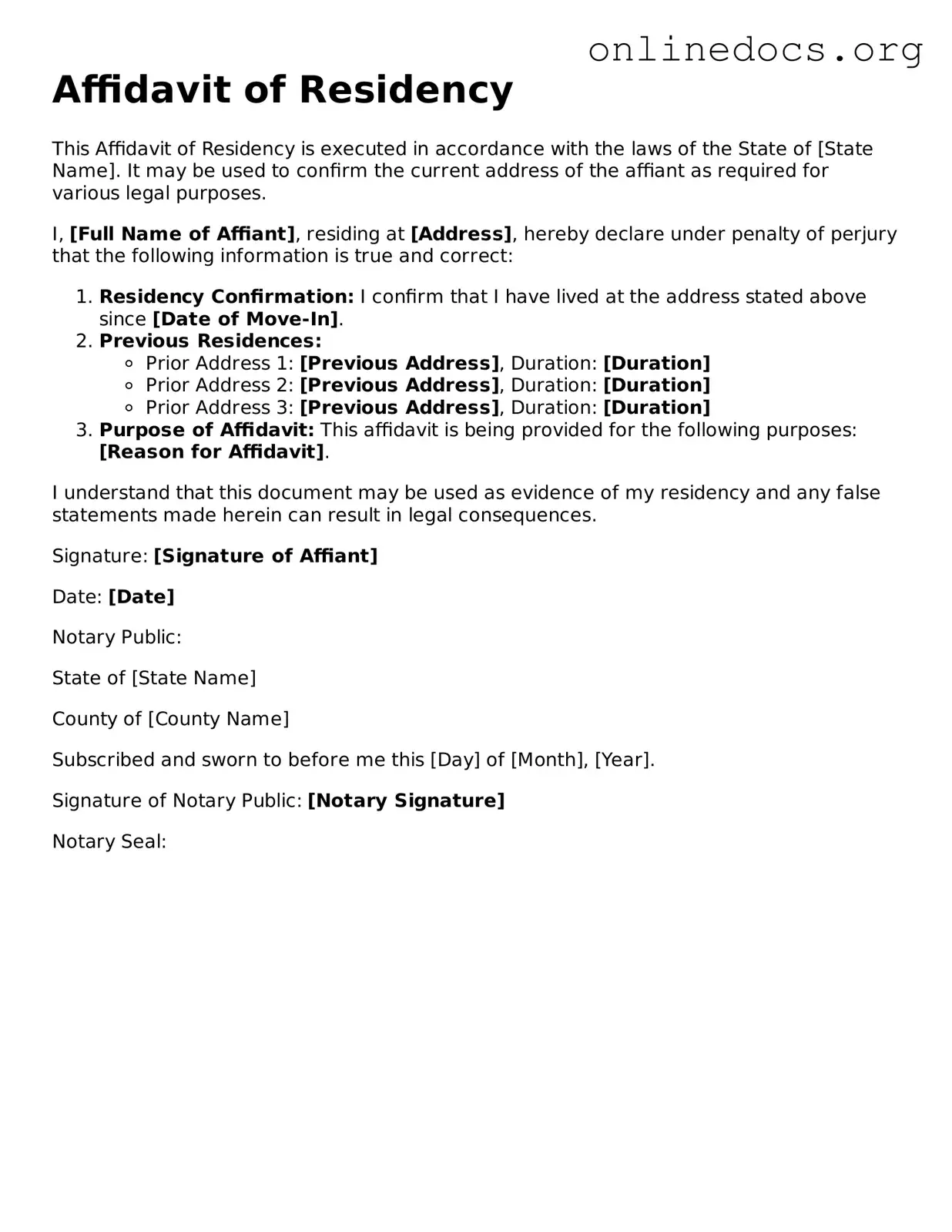The Affidavit of Residency form is similar to a Lease Agreement. A Lease Agreement is a contract between a landlord and a tenant, detailing the terms under which a tenant may occupy a property. Both documents serve to establish proof of residence, but while a Lease Agreement outlines the rights and responsibilities of both parties, the Affidavit of Residency primarily confirms an individual's residence status. It can be used to support claims made in legal or administrative processes, providing a sworn statement of where one lives.
Another document that shares similarities with the Affidavit of Residency is the Utility Bill. A utility bill provides evidence of a person's residence by showing their name and address on a statement for services like electricity, water, or gas. This document can be used to verify residency in a similar manner as the Affidavit. However, unlike the Affidavit, a utility bill is not a sworn statement, which means it does not carry the same legal weight but is often accepted for various administrative purposes.
The Voter Registration Card is also comparable to the Affidavit of Residency. This card is issued to individuals who register to vote, reflecting their residential address. Both documents serve as proof of residency, but the Voter Registration Card additionally confirms eligibility to vote in a specific jurisdiction. While the Affidavit is a sworn statement, the Voter Registration Card is an official government document that can be used in various legal and civic contexts.
Another related document is the Driver’s License. A Driver’s License typically contains the holder's name and residential address, making it a common form of identification. Like the Affidavit of Residency, it serves as proof of where someone lives. However, the Driver’s License also grants the ability to legally operate a vehicle, which the Affidavit does not. Both documents can be used to establish residency in different situations, such as applying for benefits or enrolling in schools.
The Bank Statement is another document that can be likened to the Affidavit of Residency. A bank statement shows transactions and balances, often including the account holder's name and address. This document can serve as proof of residency in various situations, similar to the Affidavit. However, a bank statement provides a financial overview rather than a sworn declaration of residency, which can limit its use in formal legal contexts.
The Employment Verification Letter can also be considered similar to the Affidavit of Residency. This letter is typically issued by an employer and confirms an individual's employment status and often includes their address. Both documents can serve to establish residency, but the Employment Verification Letter is focused on employment rather than solely on residency. It may be required for applications like loans or housing, providing a different angle of verification.
In addition to the various residency documents discussed, it's important to consider the role of the Trailer Bill of Sale, which is essential when buying or selling a trailer. This form provides legal confirmation of the transaction, ensuring clarity in the agreement between the buyer and seller, much like the various proofs of residency we have explored. For those interested in obtaining this important document, resources such as legalformspdf.com are available to assist with the necessary paperwork.
The Rental Application is another document that bears resemblance to the Affidavit of Residency. When applying to rent a property, individuals often provide a rental application that includes their current address and proof of residency. While the Affidavit is a sworn statement about residency, the Rental Application is more of a request for tenancy that includes residency information as part of the application process.
Lastly, the School Enrollment Form is similar in that it often requires proof of residency for parents or guardians enrolling their children in school. This form typically asks for documentation that verifies where the family lives, much like the Affidavit of Residency. However, the School Enrollment Form is specifically tailored to educational institutions and may require additional information about the child and the parents' legal guardianship.
